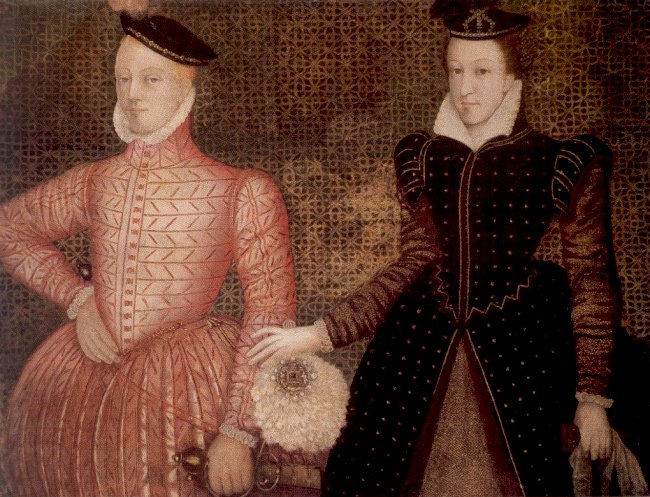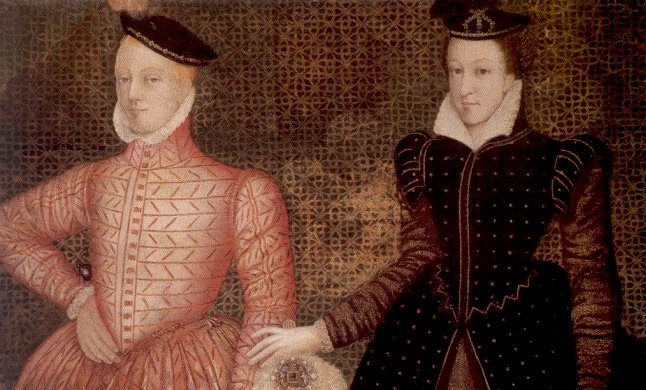
Mary and Henry were actually cousins – they shared a grandmother in Margaret Tudor – and they both had strong claims to the throne of England.
Mary had the stronger claim since her father, James V of Scotland, was Margaret’s first-born son. Darnley’s claim arose through Margaret’s second marriage, and was through a daughter (also named Margaret), so his claim was lesser than Mary’s. But because Margaret was Henry’s older sister, both their claims were stronger than anyone else’s, including the Greys who claimed through the younger Mary Tudor.
Both Mary and Darnley were Catholic – which made them even more of a real threat to Elizabeth’s throne as it offered a dynastic alternative to a Protestant rule. The fact that Darnley was free to marry Mary of Scotland proves Elizabeth’s strong belief in justice and the letter of the law: Darnley had been imprisoned after his parents, the semi-regal Lennox family, went crazy in 1562, trying to seize power wherever they could find it – Scotland or England (they also had strong ties to France), but Elizabeth released him when nothing could be proved against him. (Henry VIII would have executed them just for the risk they posed!)
Quick context from Wikipedia about Darnley’s parents: “Matthew Stewart, 4th Earl of Lennox, was third in line to the Scottish throne, and his wife Margaret Douglas was niece to Henry VIII and granddaughter of Henry VII.[7]
Was this marriage or wasn’t it another instance of Mary baiting Elizabeth? After all, Mary married the man who could help her steal the English throne. To dissuade her from this choice, Elizabeth had offered the widowed Queen of Scots her own favorite, Robert Dudley, as husband. Elizabeth R does an amazing job giving us this story, showing us an Elizabeth foiled in her plan to protect her throne and make her beloved a King at the same time. (“How could she marry Darnley, I offered her Leicester.“)
Either way, marriage to Darnley launched the downhill trajectory of her life. The union didn’t end well, though it did produce the perfect heir to the English and Scottish Thrones in James VI/James I of England. So let us stop there and raise a glass to toast the consequences of today’s marriage – the peaceful unification of Scotland and England. (I’m not going to mention the possible ramifications of Brexit here…that’s for another post.)
***
If you like my posts, you’ll love my books! My Seymour Saga trilogy tells the gripping story of the short-lived dynasty that shaped the Tudor Era. Jane the Quene skews romantic, The Path to Somerset is pure Game of Thrones (without the dragons), and The Boy King is a noir coming-of-age. Get them now through Amazon, Barnes & Noble, Kobo, and Apple, or even your local independent bookstore!

(PS Already read them? Did you love them? Then please review them – even just a stars rating! It makes a huge difference in helping new readers find them and would mean the world to me!)

With regards to Mary and Darnleys claim to the English throne, Darnley actually had the stronger claim out of the both of them because Mary was a foreigner; Darnley and his mother Lady Margaret Douglas (James V of Scotland’s half sister) were born in England.